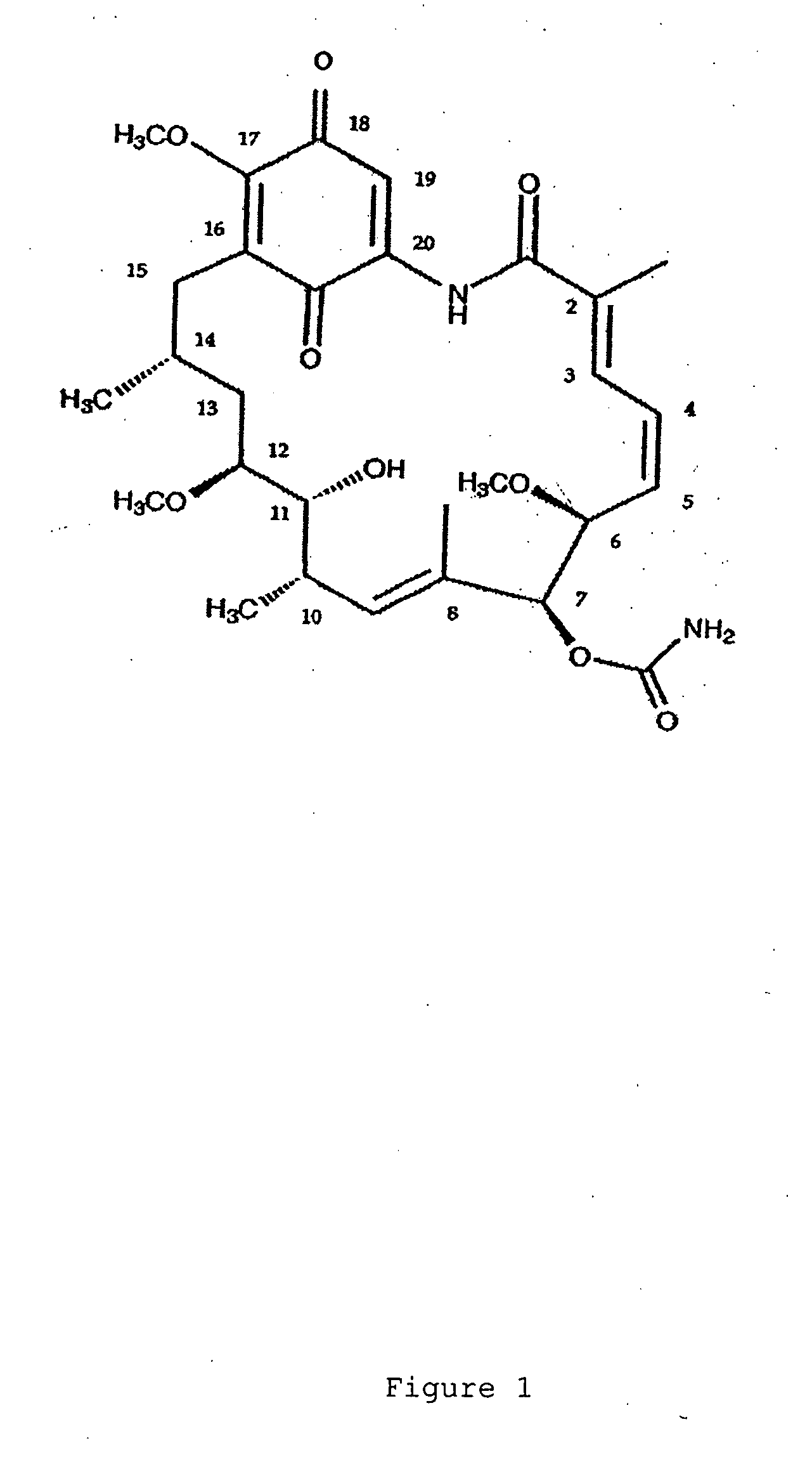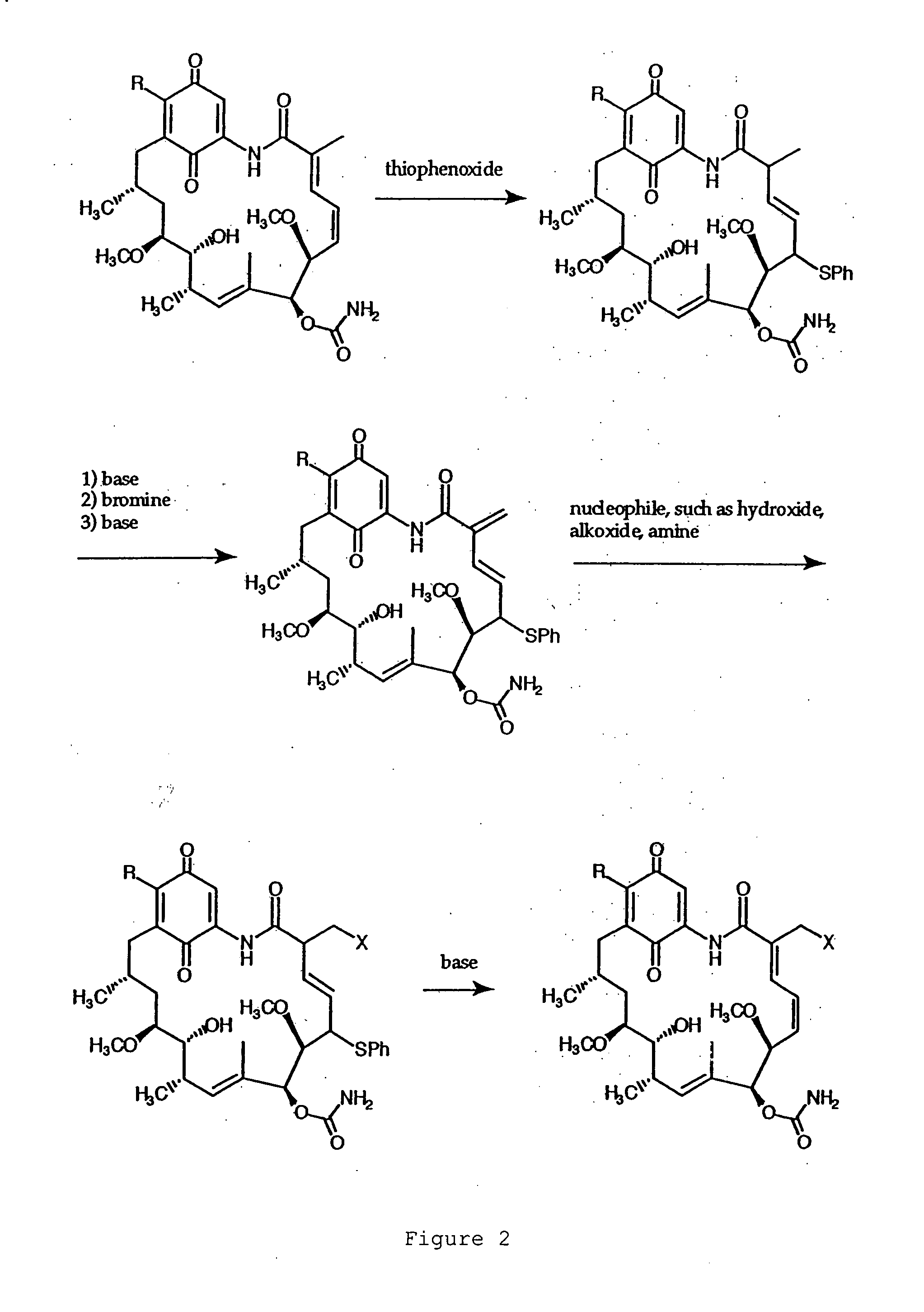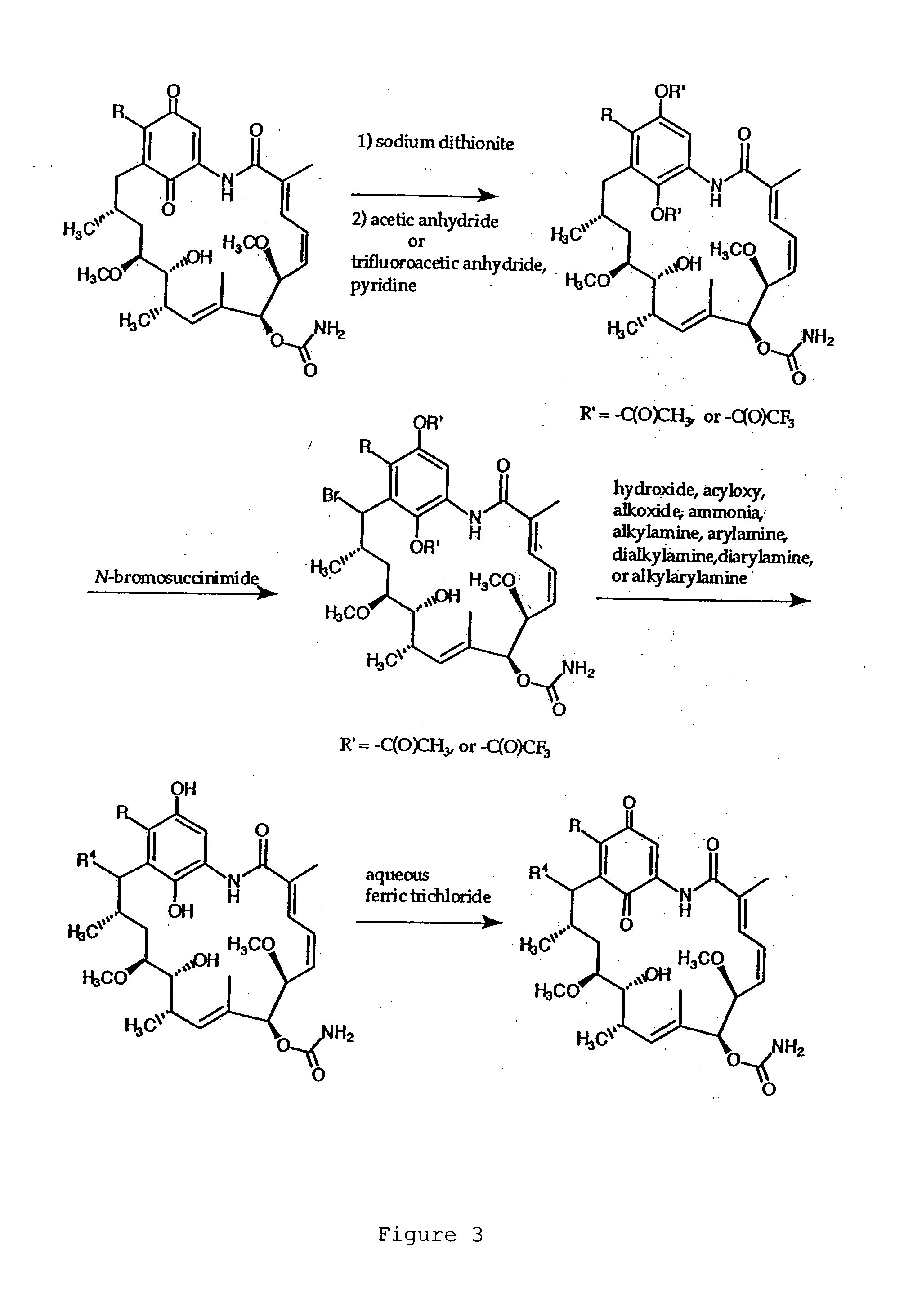Geldanamycin derivatives and method of use thereof
a technology of derivatives and geldanamycin, which is applied in the field of new geldanamycin derivatives, can solve the problems of toxicity of natural compound geldanamycin for therapeutic use, and achieve the effect of improving the safety and efficacy of natural compound geldanamycin
- Summary
- Abstract
- Description
- Claims
- Application Information
AI Technical Summary
Benefits of technology
Problems solved by technology
Method used
Image
Examples
example 1
[0072] Computer Modeling: Geldanamycin derivatives that have been assessed by molecular modeling studies to have a greater affinity toward hsp90 of Plasmodium falciparum and Trypanosoma Cruzi over that toward human hsp90 are the derivatives that possess one or more of the following modifications (see FIG. 1 for the numbering scheme of geldanamycin): (1) geldanamycin derivatives with a hydrogen-bonding atom as an oxygen (e.g., a hydroxyl group or ether group) or nitrogen (e.g., a primary, secondary or tertiary amine group) bonded to the methyl carbon atom on position 2 of geldanamycin; (2) geldanamycin derivatives with a hydrogen-bonding atom as an oxygen (e.g., a hydroxyl group or ether group) or nitrogen (e.g., a primary , secondary or tertiary amine group) bonded to the carbon atom of position 15 of geldanamycin (it is predicted that such a substituent will have increased affinity to the parasitic hsp90 when in the α-position on carbon 15); (3) geldanamycin derivatives in which th...
example 2
[0073] General Methods. Melting points are uncorrected. Infrared spectra were recorded on a Matton Galaxy Series FTIR 3000 spectrophotometer. Ultraviolet-visible spectra were recorded on a Hitachi U-4001 spectrophotometer. 1H and 13C NMR spectra were recorded on Varian Inova-600, UnityPlus-500, VRX-500 or VRX-300 spectrometers. The numbering used in all assignments is based on geldanamycin ring system unless otherwise indicated. Mass spectra were performed by the MSU Mass Spectrometry Facility. Anhydrous solvents were purified as standard methods.
[0074] Compound G: 17-(1-Azetidinyl)-17-demethoxygeldanamycin.
[0075] Azetidine (4.0 μl, 59 μmol) was added to a solution of (+)-geldanamycin (7.5 mg, 13 μmol) in dichloromethane (1.5 ml) with stirring. Upon the complete conversion of geldanamycin shown by thin layer chromatography (40 minutes), the mixture was washed with brine, dried over anhydrous sodium sulfate, and concentrated. Separation by flash column chromatography on silica gel...
example 3
[0094]
TABLE 1Testing of Compounds A-G against P. falciparum.TargetCompoundstrainIC50IC90[Start]UnitsMefloquineW21.6294.0886250ng / mlMefloquineTM91C23513.815129.1164250ng / mlChloroquineW229.675837.83211000ng / mlChloroquineTM91C235124.6805159.81271000ng / mlAW2649.50551787.86410000ng / mlATM91C2351025.03642534.05510000ng / mlBW2785.5122730.36710000ng / mlBTM91C2352713.80324019.6210000ng / mlCW2875.3863063.07210000ng / mlCTM91C2352637.41993953.09710000ng / mlDW2957.63666176.34510000ng / mlDTM91C2354044.44738407.38410000ng / mlEW21259.69515425.57710000ng / mlETM91C2354288.08456066.25510000ng / mlFW2908.63893736.16810000ng / mlFTM91C2353034.53815543.16110000ng / mlGW268.291208.208610000ng / mlGTM91C235169.2607346.262410000ng / ml
[0095] Table 1 shows the IC50 and IC90 values for compounds A through G when tested against two different P. falciparum target strains, W2 and TM91C235. Both parasite strains are chloroquine and pyrimethamine resistant and TM91C235 is also mefloquine resistant.
PUM
| Property | Measurement | Unit |
|---|---|---|
| Linear density | aaaaa | aaaaa |
| Heat | aaaaa | aaaaa |
Abstract
Description
Claims
Application Information
 Login to View More
Login to View More - R&D
- Intellectual Property
- Life Sciences
- Materials
- Tech Scout
- Unparalleled Data Quality
- Higher Quality Content
- 60% Fewer Hallucinations
Browse by: Latest US Patents, China's latest patents, Technical Efficacy Thesaurus, Application Domain, Technology Topic, Popular Technical Reports.
© 2025 PatSnap. All rights reserved.Legal|Privacy policy|Modern Slavery Act Transparency Statement|Sitemap|About US| Contact US: help@patsnap.com



